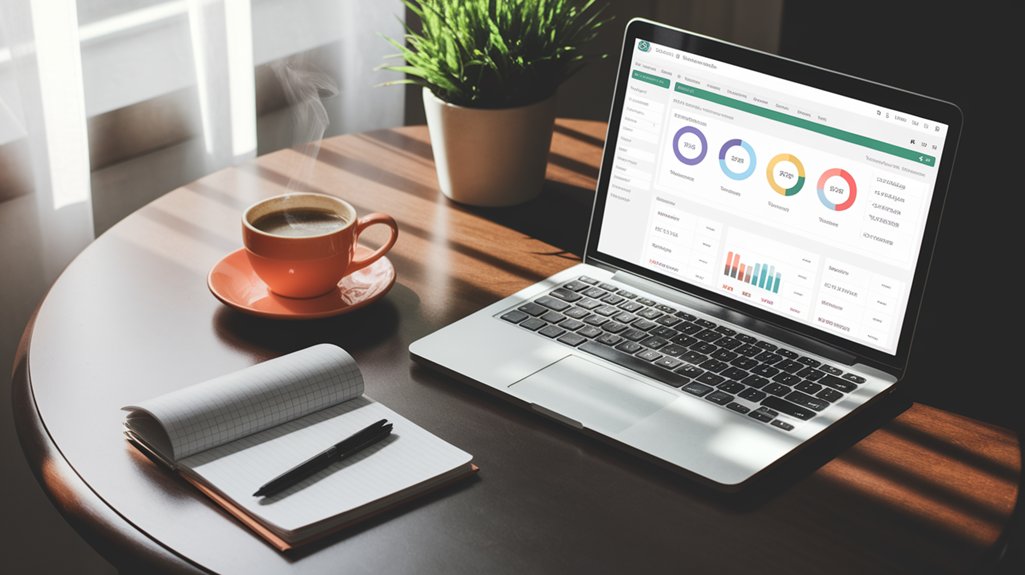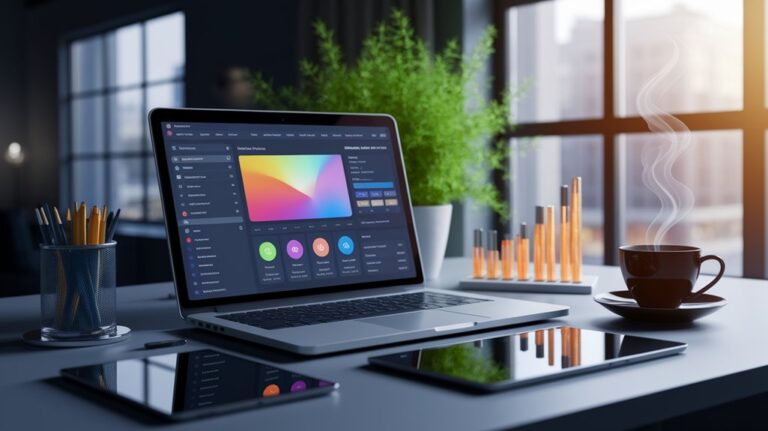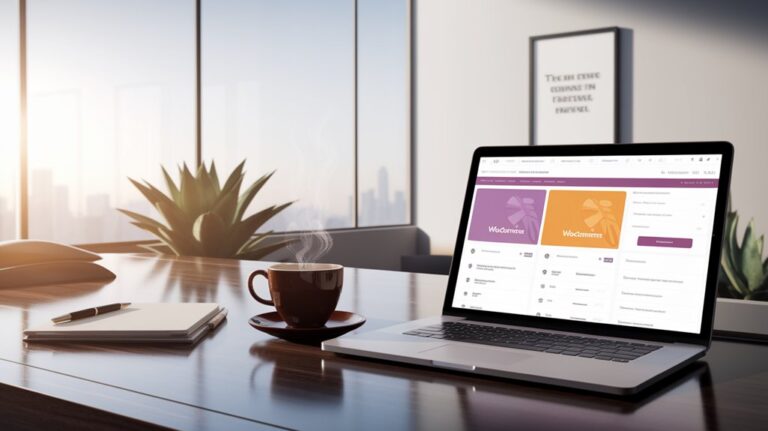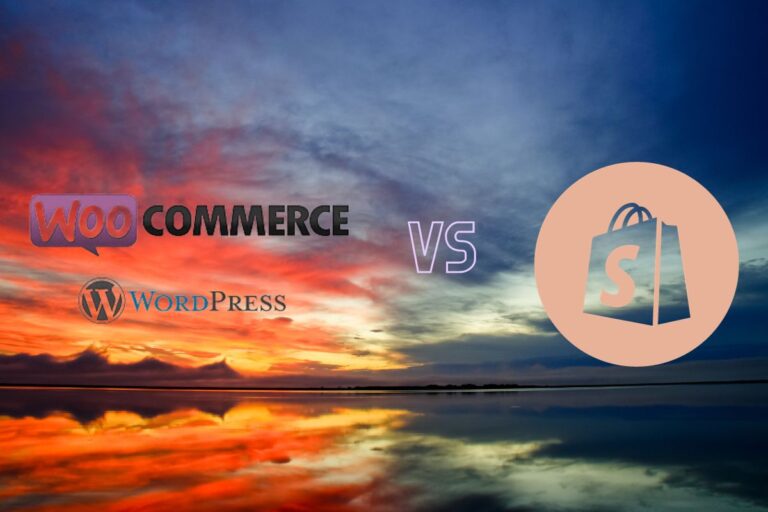Master WooCommerce: Tips for Maintaining a Secure and Efficient Store
As we navigate the complexities of running a WooCommerce store, it’s essential to prioritize security and efficiency. By implementing robust security measures and keeping our platforms updated, we can protect our customers and our business. Optimizing site speed and utilizing secure payment gateways are also crucial steps we can take. What other strategies should we consider to ensure our store remains trustworthy and high-performing? Let’s explore these together.
Key Takeaways
- Implement strong, unique passwords and two-factor authentication to enhance account security for all users.
- Regularly update WooCommerce and plugins to improve security and access new features.
- Optimize site speed by compressing images and minimizing HTTP requests for better user experience.
- Utilize secure payment gateways and educate customers on safe transaction methods to build trust.
- Schedule regular backups of store data, automating processes for efficiency and quick recovery.
Implement Robust Security Measures
When we think about securing our WooCommerce store, implementing robust security measures should be our top priority.
We can start by using strong, unique passwords for all user accounts and encouraging our team to do the same. Two-factor authentication is another innovative step that adds an extra layer of protection, ensuring only authorized users access our store.
Regularly backing up our data is essential, allowing us to recover quickly from potential breaches. Let’s also consider using a secure payment gateway and an SSL certificate to protect our customers’ sensitive information.
Keep Your WooCommerce and Plugins Updated
To ensure our WooCommerce store remains secure and efficient, we must keep both WooCommerce and our plugins updated regularly.
By staying current with updates, we not only enhance our store’s security but also unlock new features and improvements that can elevate our customer experience. Each update often includes critical patches that protect against vulnerabilities, so we shouldn’t overlook them.
Staying updated not only boosts security but also unlocks new features that enhance our customers’ experience. Don’t overlook the critical patches!
Let’s set a schedule for checking updates weekly or bi-weekly. Automatic updates are a great option, but we should still monitor them to ensure everything functions smoothly.
Embracing innovation means being proactive—when we keep our store updated, we’re not just maintaining; we’re positioning ourselves at the forefront of eCommerce success.
Let’s commit to this essential practice together!
Optimize Your Site for Speed
To keep our WooCommerce store running smoothly, we need to focus on optimizing site speed.
By implementing image compression techniques, minimizing HTTP requests, and leveraging browser caching, we can significantly enhance our site’s performance.
Let’s explore these strategies to ensure our customers have a seamless shopping experience.
Image Compression Techniques
As we work to enhance the speed of our WooCommerce store, one crucial aspect we can’t overlook is image compression. By optimizing our images, we not only improve loading times but also enhance user experience. Here are some innovative techniques we can implement:
| Technique | Description | Benefits |
|---|---|---|
| Lossless Compression | Reduces file size without quality loss | Maintains image integrity |
| Lossy Compression | Significantly reduces file size with some quality loss | Faster loading times |
| Image Formats | Use modern formats like WebP | Smaller files, better quality |
Minimize HTTP Requests
Minimizing HTTP requests is essential for optimizing our WooCommerce store’s speed, especially since each request can slow down page loading times.
To achieve this, we should streamline our design by reducing the number of elements on a page. Combining CSS and JavaScript files can significantly cut down requests, making our site more efficient.
We can also consider using CSS sprites for images, which consolidates multiple graphics into a single file, further enhancing load times.
Additionally, eliminating unnecessary plugins helps reduce overhead and keeps our store agile.
By staying innovative and focused on these strategies, we’ll not only improve user experience but also boost our store’s performance in search engine rankings.
Let’s embrace these changes and watch our efficiency soar!
Leverage Browser Caching
While we focus on enhancing our WooCommerce store’s speed, leveraging browser caching becomes a crucial strategy.
By storing static files like images, stylesheets, and scripts in our customers’ browsers, we significantly reduce load times for repeat visitors. This means they’ll enjoy a smoother experience, and we’ll see increased engagement and conversions.
To implement this, we can set cache expiration headers, allowing files to be stored for a specified duration.
When users revisit our store, their browsers will pull these files from local storage instead of downloading them again.
Utilize Secure Payment Gateways
Choosing secure payment gateways is crucial for our WooCommerce store‘s success and customer trust. By integrating reliable options like PayPal, Stripe, or Authorize.net, we not only enhance our store’s credibility but also protect sensitive customer information.
These gateways employ advanced encryption technologies, ensuring transactions are safe from fraud and data breaches.
Moreover, we should regularly update our payment systems to leverage the latest security features and compliance standards. Offering diverse payment options can also boost conversion rates, as customers appreciate flexibility.
Let’s educate our customers about these secure methods, reinforcing their confidence in our store.
Regularly Back Up Your Store Data
Backing up our store data is crucial for protecting our business.
We should consider how often we back up and explore various storage solutions to keep our information safe.
Let’s discuss the best practices for backup frequency and the options available for secure storage.
Backup Frequency Recommendations
Regular backups are essential for any WooCommerce store, and we recommend scheduling them at least once a week. This frequency helps ensure that we’re capturing our latest data, including orders, customer information, and product details.
If we’re making significant changes or updates—like launching a new product line or running a major promotion—it’s wise to back up even more frequently, perhaps daily. By adopting this proactive approach, we can safeguard our store against unexpected data loss or system failures.
Let’s also consider automating our backup process; it saves time and minimizes potential errors.
Storage Solutions Options
While we focus on maintaining a secure WooCommerce store, selecting the right storage solutions for our backups is crucial. We can harness innovative cloud services like Google Drive or Dropbox for their scalability and accessibility.
These platforms allow us to automate our backup processes, ensuring our data is consistently secured without manual intervention. Additionally, we should consider dedicated solutions like Amazon S3 for a more robust option, offering flexibility and durability.
Don’t forget about local backups, too; they provide a quick recovery solution in case of emergencies. By employing a multi-tiered approach, we can protect our valuable store data effectively, ensuring peace of mind as we innovate and grow our eCommerce business.
Monitor and Analyze Store Performance
To ensure our WooCommerce store thrives, we need to actively monitor and analyze its performance.
By leveraging data-driven insights, we can identify trends and make informed decisions that drive growth.
Leveraging data-driven insights empowers us to uncover trends and make strategic decisions for sustainable growth.
Here are four key areas we should focus on:
- Sales Analytics: Track conversion rates and average order values to gauge effectiveness.
- Customer Behavior: Analyze user journeys to optimize navigation and checkout.
- Inventory Management: Monitor stock levels to prevent overselling and stockouts.
- Site Performance: Regularly check loading speeds and uptime to enhance user experience.
Frequently Asked Questions
How Can I Improve Customer Trust in My Woocommerce Store?
To improve customer trust in our WooCommerce store, we should focus on transparency and communication.
Let’s showcase customer reviews, highlight secure payment options, and share our return policy prominently.
We can also invest in professional design to create a polished look.
Regularly updating our site with fresh content will demonstrate our commitment to quality.
What Are the Best Practices for Woocommerce Product Descriptions?
When we craft product descriptions for WooCommerce, we should focus on clarity, uniqueness, and engaging storytelling.
Let’s highlight key features while addressing customer pain points. Using persuasive language and incorporating relevant keywords can boost SEO, driving more traffic to our store.
It’s also smart to include social proof like reviews or testimonials.
How Do I Effectively Manage Inventory in Woocommerce?
To effectively manage inventory in WooCommerce, we should leverage smart tools and strategies.
First, let’s automate stock updates to reduce human error. We can also set low-stock notifications to keep us proactive.
Regularly analyzing sales data helps us identify trends, so we can adjust our stock accordingly.
By categorizing products efficiently, we enhance our inventory organization.
Together, these practices not only streamline our operations but also boost our overall store performance.
What Are the Recommended Themes for Woocommerce Stores?
When selecting themes for our WooCommerce stores, we should prioritize flexibility and responsiveness.
Themes like Astra, OceanWP, and Storefront stand out for their modern designs and customization options. They not only enhance user experience but also support various plugins seamlessly.
Let’s ensure our chosen theme aligns with our brand identity while being optimized for speed and SEO.
How Can I Enhance My Store’s User Experience?
To enhance our store’s user experience, we should focus on intuitive navigation and fast loading times.
Let’s optimize product images and streamline the checkout process to make it seamless.
We can gather customer feedback to identify pain points and implement solutions.
Additionally, incorporating personalization features, like tailored recommendations, will engage our visitors.
Conclusion
In conclusion, by mastering WooCommerce with these essential tips, we can create a secure and efficient online store that our customers can trust. Let’s implement robust security measures, keep everything updated, optimize our site for speed, use secure payment gateways, and regularly back up our data. By monitoring and analyzing our store’s performance, we’ll not only enhance the shopping experience but also ensure our business thrives in the competitive e-commerce landscape.







